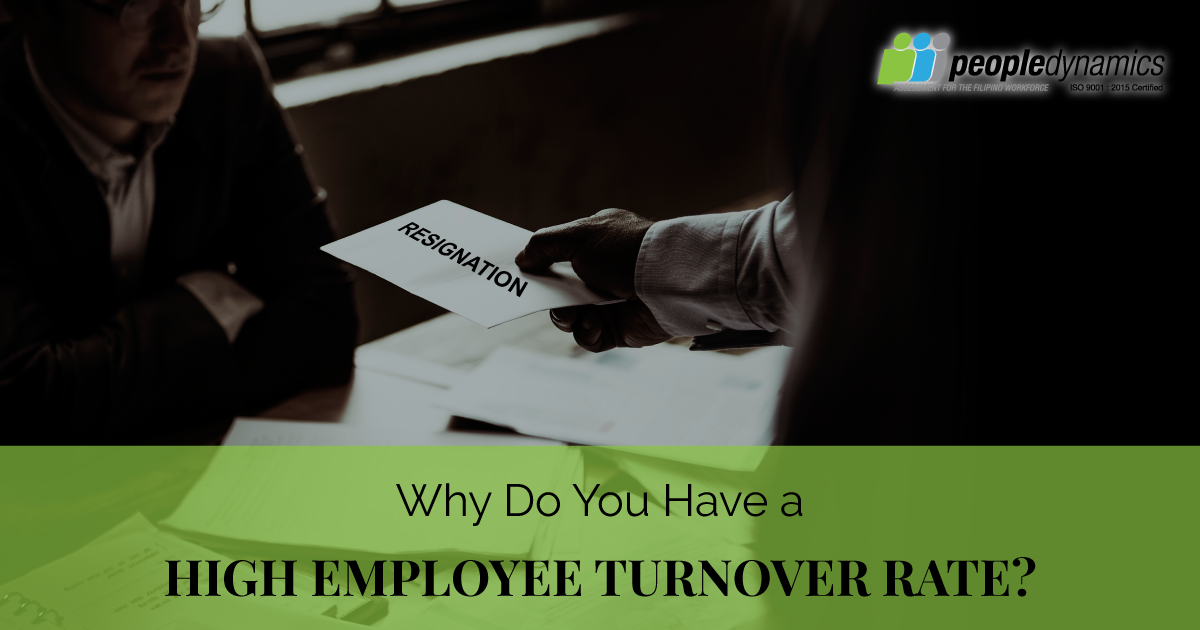“Change is the only constant in life.” Have you heard these words before? This was said by the Greek philosopher Heraclitus. And, as the world faces disruptions and transformations one after the other, these words can’t be truer, especially in the workplace. For example, your employees today may not be your employees anymore by tomorrow.
Employees can leave your organization for various reasons. But, if you’re continuously looking for people to fill in the job vacancies in your company, you most definitely have a high turnover. With the cost of employee turnovers ranging from six to nine months’ salary on average, you have a huge problem. Not to mention that when an employee leaves, a chunk of your business leaves with them. So, what could be the reasons for your high employee turnover?
Reasons for High Employee Turnover Rate
Poor management
Best employees leave bosses, not companies. A Gallup poll of a million U.S. workers found out that the number one reason why employees quit is because of a bad boss, giving weight to this statement. So, if you notice that you have more and more people resigning, try to look at who’s handling them. Managers greatly influence employee turnover.
Also, poor management leads to a lack of trust in the organization and its policies. And trust matters at work. When employees don’t trust you, sooner or later, they will stop caring, stop taking responsibility, and stop being motivated to work for you. And when they lose that motivation, you can’t expect them to stay.
The first step to solving this is to get a clear picture of which aspect of your management is affecting employee turnover. You can conduct diagnostic organizational surveys to get feedback. And, when an employee leaves, you should conduct an exit interview. A well-done exit interview doesn’t only give you feedback about your organization, but also allows you to learn which areas you can improve.
Toxic working environment
According to Monster, a toxic work environment is a “one wherein dysfunction and drama reign, whether it’s the result of a narcissistic boss, vindictive co-workers, absence of order, et cetera.” And since a toxic work environment is where workplace problems exist most of the time, it usually makes employees want to escape, leading to a high turnover rate.
To determine if your organization has a toxic working environment, here are some signs:
- Employees are overworked and chronically stressed
- Employees have little to no work-life balance
- Cliques, exclusion, gossipy behavior, and bullying run rampant
- There’s little to no room for growth
- You have bad leaders
In addressing toxic workplaces, an organizational assessment is essential. This step will help you obtain valid information about the factors that make your workplace toxic. And after identifying those factors, you can then plan on how to fix them.
No room for growth
According to LinkedIn’s 2019 Workforce Learning Report, 94% of employees would stay at a company longer if it invested in their learning and development. This just shows how important employee development is for your employees. So, if you don’t offer room for growth to them, you can’t expect them to stay with you.
So, if you want to reduce your high turnover, employee development is one of the most critical investments you need to make. And when you do invest in it, you should plan an effective employee development program that will help you avoid the pitfalls of corporate training.
Your compensation and benefits package doesn’t suffice
In a survey done by Monster, 48% of Filipino employees feel that they’re not getting paid enough for what they do. And in the same survey, they also found out that 54% of Filipino employees will switch careers for a better salary and financial ability.
And, if your employees are part of these data, then you’ll surely have a high employee turnover. Ensure that your employees get proper compensation by having an efficient pay structure. Aside from the basic salary, it’s also good if you provide various benefits that matter to them.
Of course, you should also take note that just a high salary and a competitive benefits package isn’t the be-all-and-end-all of retention. You should combine this with different non-financial factors such as employee development, experience, recognition, and more.
Organizational instability
Times of uncertainty is challenging not just for your organization as a whole, but also to each individual in it. And, if you’re employees can’t find their footing with the changes happening in your company, they’ll feel disconnected from you.
That’s why it’s critical that you know how to confront change at work and that you’re transparent every step of the way. You can also read more about change management and how to thrive in uncertainty in this blog post.
Having a high turnover signifies a larger issue in your organization. And if not addressed, the cost of it can even kill your business. By addressing the causes, you don’t only help your business survive—and thrive—but also help create a better workplace for your employees.




